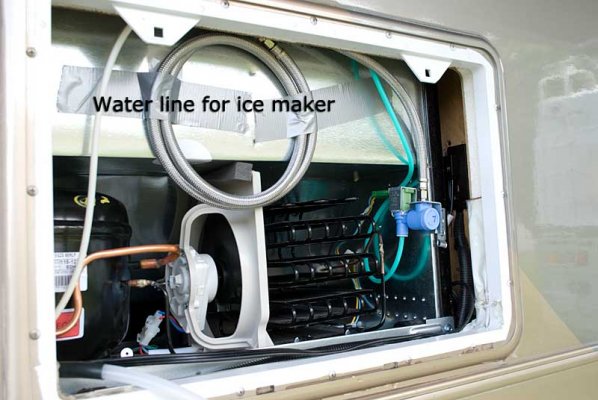Jim Dick
Moderator Emeritus
John,
Installation looks great! I was a slow learner. I had the NoCold 1200 when we bought our 2000 American Dream. Put two cooling units in it before I purchased a NoCold 1210. I was working at a dealership at the time so I got a break on the cost of the units. I replaced the cooling unit in the 1210 while under warranty. Then it failed again in 13 months and NoCold would not even consider the cost I incurred with the two units so I replaced the refer with a Samsung French Door unit.
Here at Yellowstone NP I was told I will be the official ice cream keeper since our freezer is at -2 degrees and the refer is at 36 degrees.
I have seen too many fires from NoCold units, one of which was a close friend of mine. Now I can relax a little from that fear. I had installed a fire suppression system which is now in the propane bay.
Installation looks great! I was a slow learner. I had the NoCold 1200 when we bought our 2000 American Dream. Put two cooling units in it before I purchased a NoCold 1210. I was working at a dealership at the time so I got a break on the cost of the units. I replaced the cooling unit in the 1210 while under warranty. Then it failed again in 13 months and NoCold would not even consider the cost I incurred with the two units so I replaced the refer with a Samsung French Door unit.
Here at Yellowstone NP I was told I will be the official ice cream keeper since our freezer is at -2 degrees and the refer is at 36 degrees.
I have seen too many fires from NoCold units, one of which was a close friend of mine. Now I can relax a little from that fear. I had installed a fire suppression system which is now in the propane bay.

